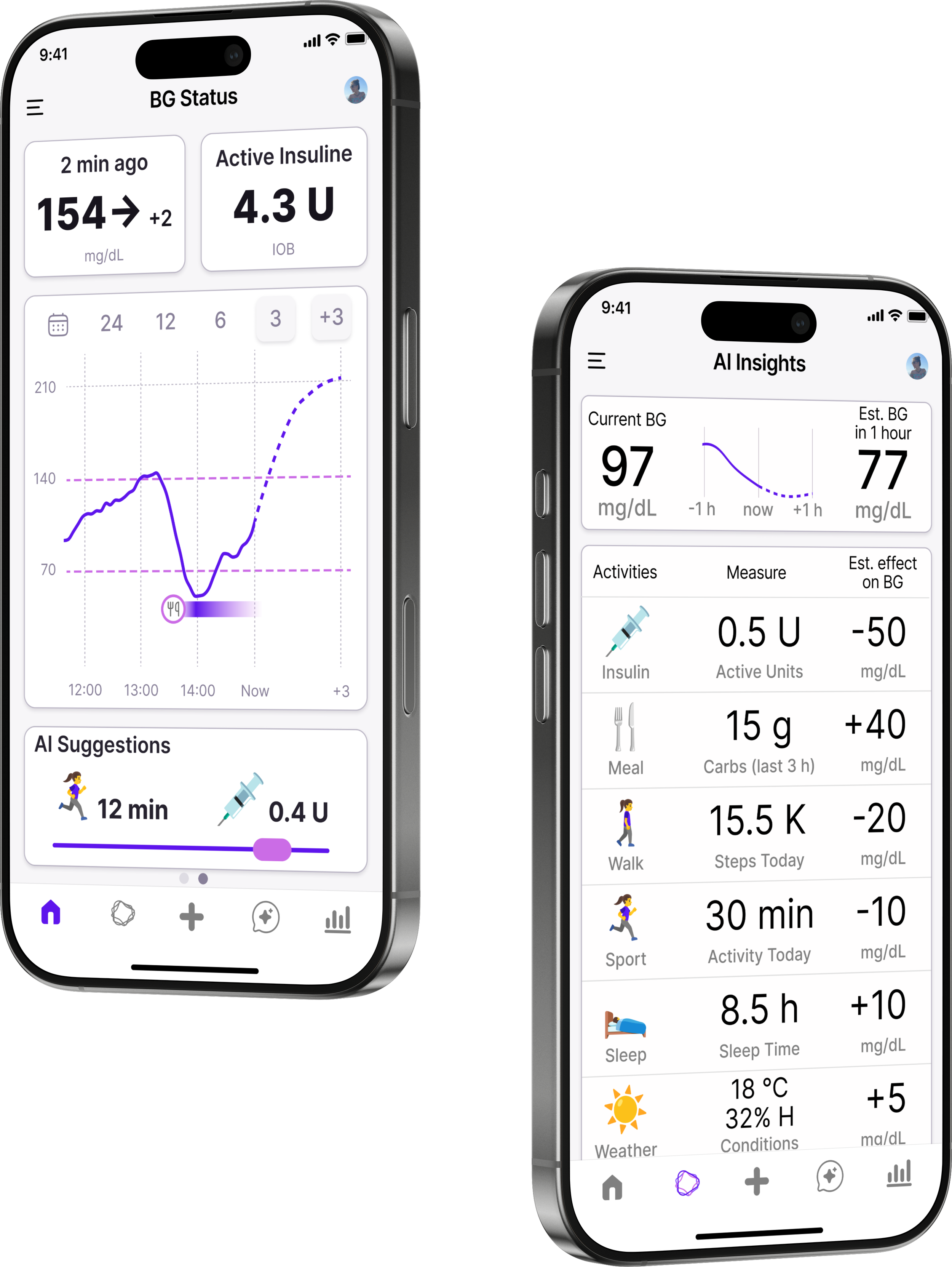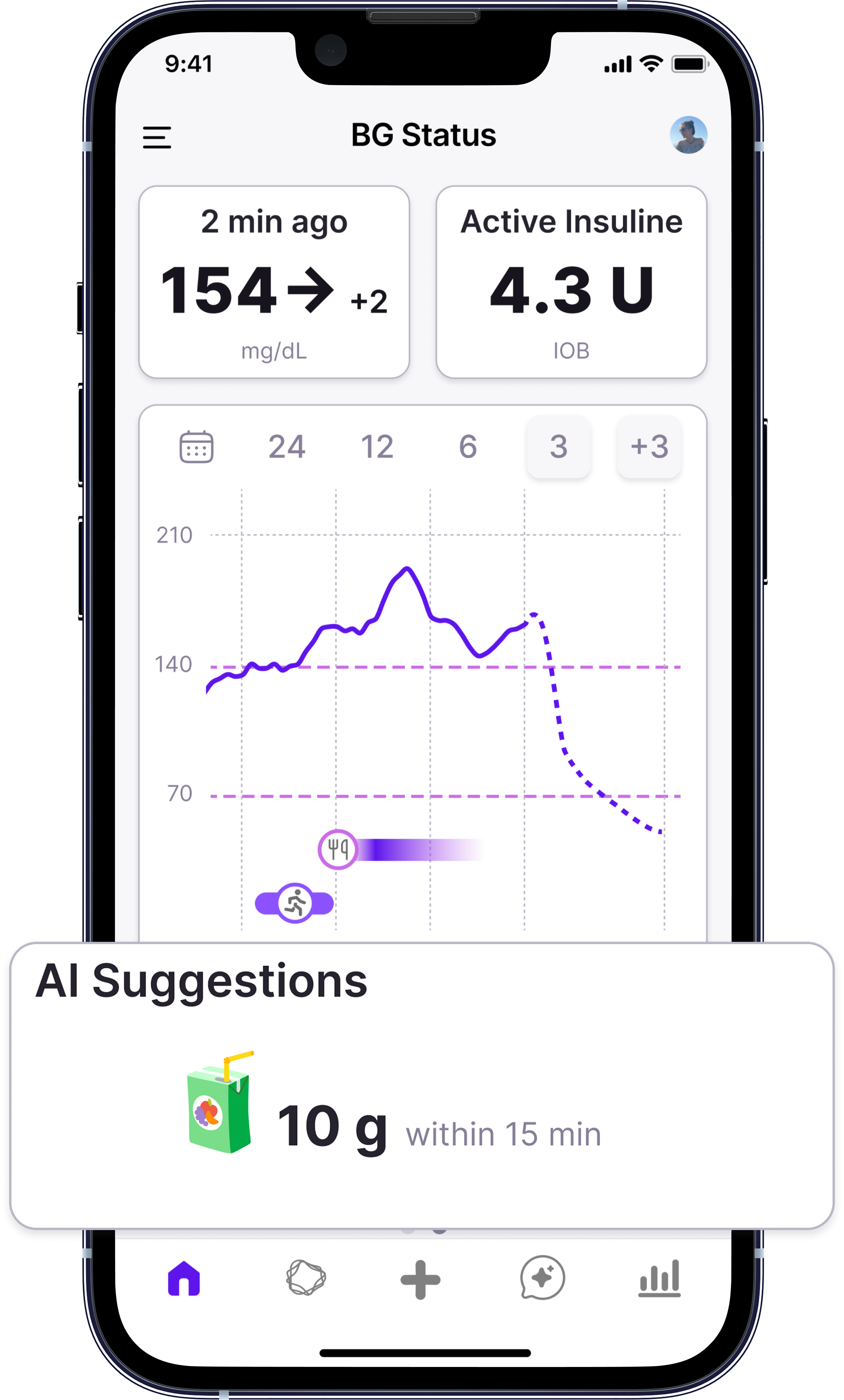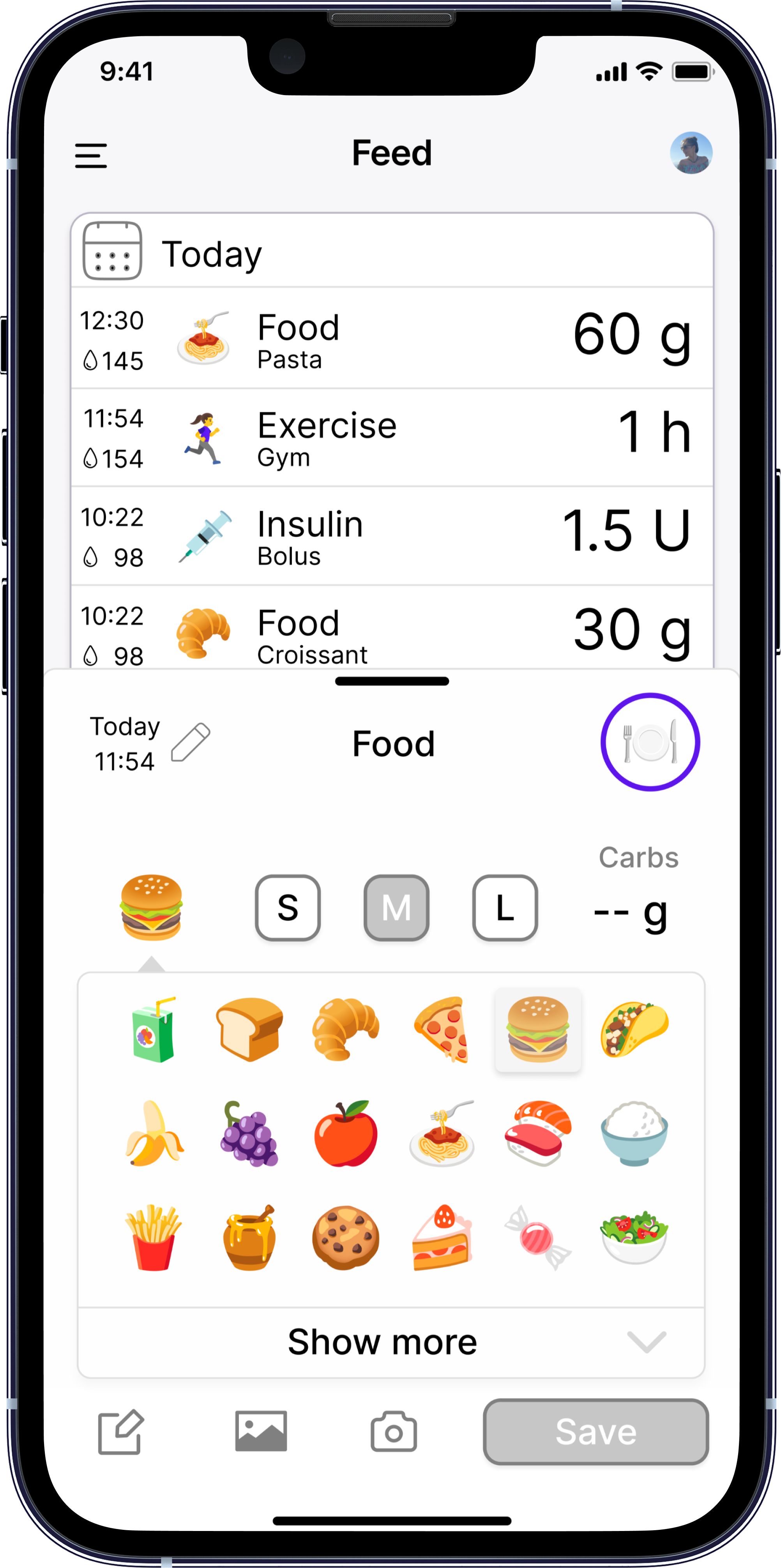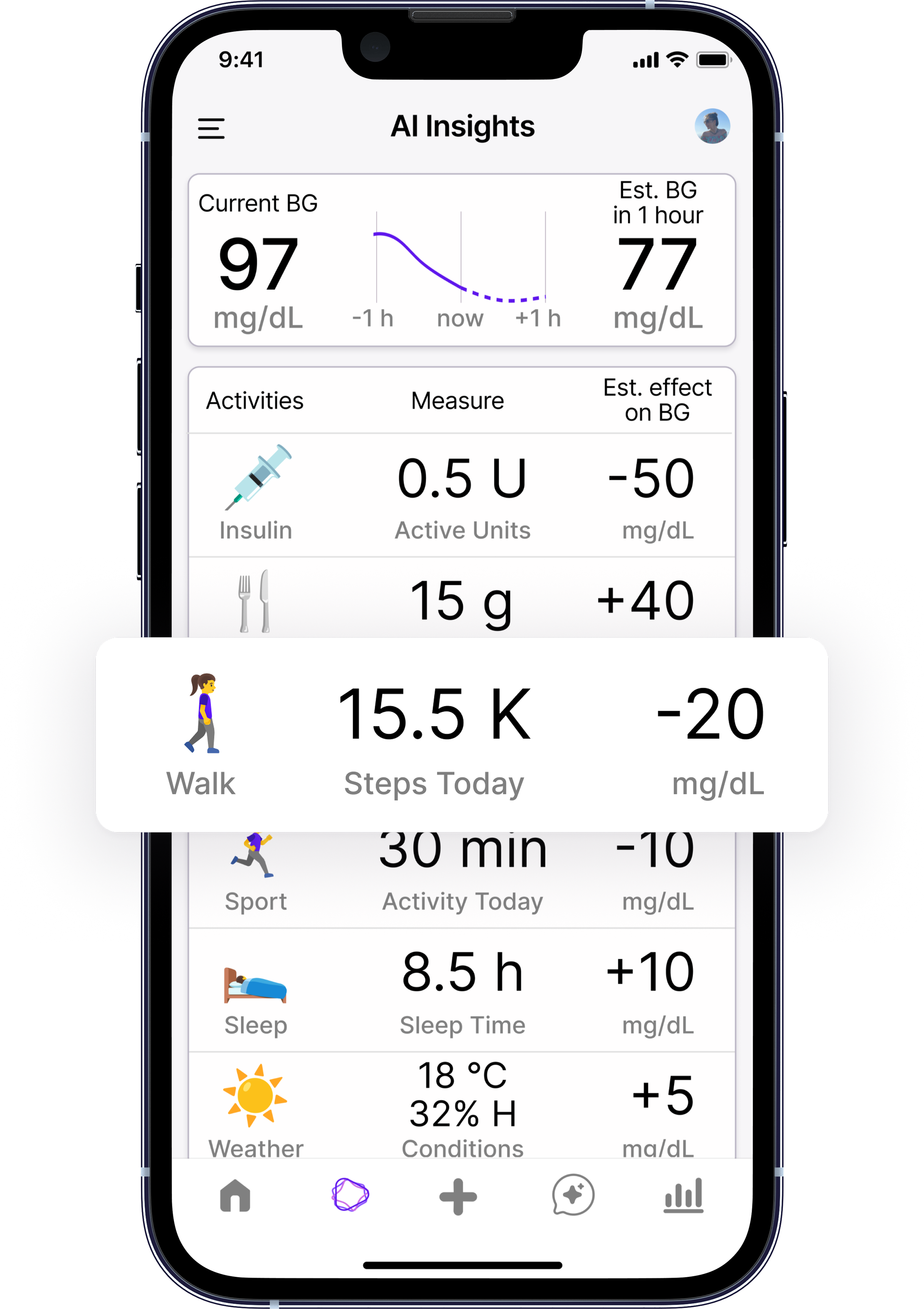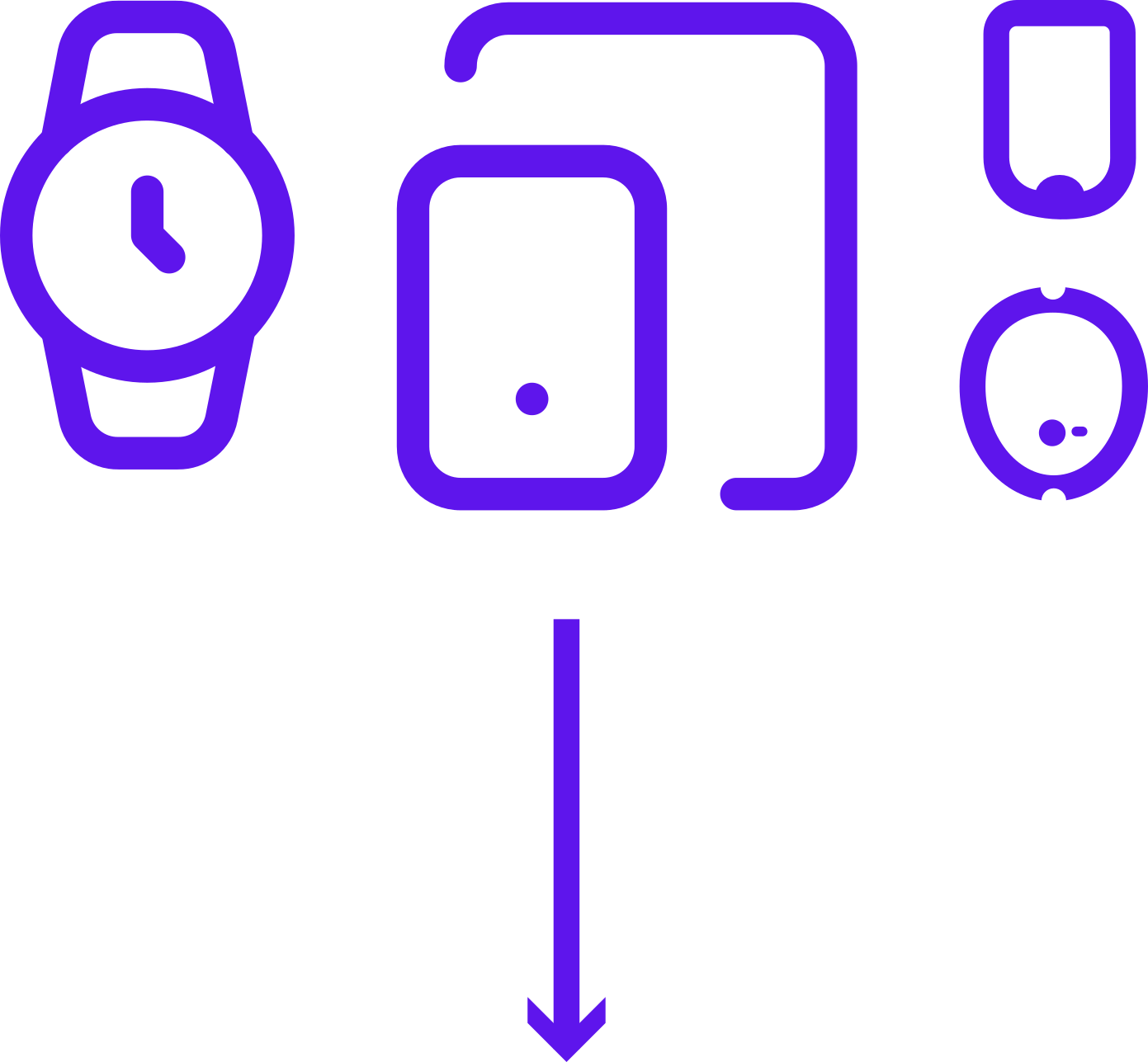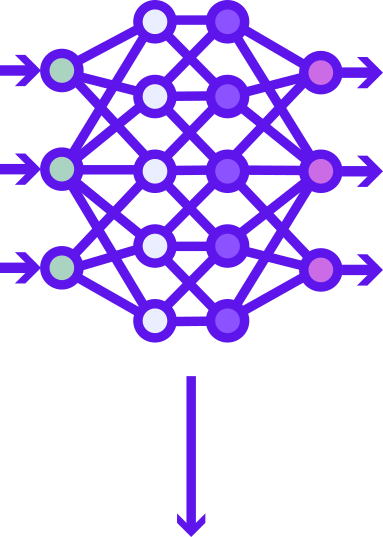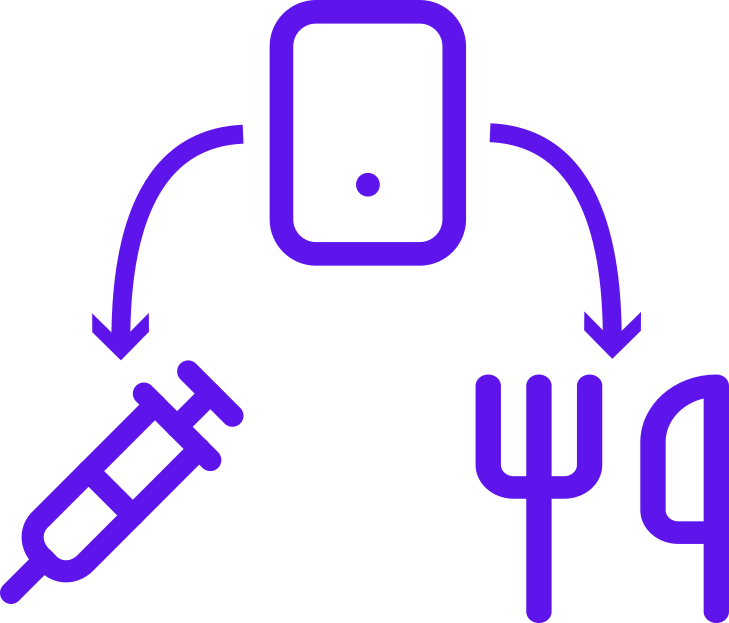We replace human guessing in type 1 diabetes with real-time AI Guidance
Track, predict, and manage diabetes effortlessly with personalized AI support.
syncsulin® is creating a fully interoperable all-in-one app for modern diabetes care, bringing every device, data source, and feature together in a single system to deliver precise, data-driven guidance to patients in real time.
AI-powered blood glucose prediction
syncsulin® predicts blood glucose up to three hours ahead using a multimodal algorithm that evaluates insulin, glucose, activity, nutrition, sleep, stress, weather, and more. By combining every relevant factor, it delivers precise, personalised forecasts that reflect each user’s real physiology on any given day.
Real-time AI suggestions
Thanks to its blood glucose prediction capabilities, syncsulin® delivers real-time suggestions that guide both insulin dosing and physical activity, helping users lower high glucose levels in the most effective and natural way.
The app also provides quantitative suggestions for sugar intake to correct hypoglycemia, ensuring the right amount is chosen without pushing blood sugar too high.
Camera food recognition with personalized food database
syncsulin® offers a simple yet powerful way to track meals. Users can tag each meal with an emoji linked to its glycemic index, allowing the algorithm to better estimate glucose absorption and deliver precise insulin recommendations.
Its advanced camera-based food recognition learns from each photo, building a personal database that refines carbohydrate estimates over time. When applied across a shared restaurant database, this adaptive system improves accuracy for everyone, creating a collective intelligence that grows smarter with each meal.
AI Pattern Insights
syncsulin® Pattern Insights feature uses machine learning to quantify the impact of every factor influencing blood glucose, offering unprecedented transparency in diabetes management. Users can see in real time how steps, food, insulin, sleep, and other signals will shape their glucose in the coming hours and make informed decisions to keep their levels stable.
Here is how it works in 3 simple steps:
1. Data Collection
The App collects data from CGMs, pumps, pens, wearables, the smartphone, and meal photos, capturing everything from blood glucose and insulin to activity, sleep, menstrual cycle, weather, and location.
2. Data Analysis
syncsulin® algorithm interprets all collected data, learning each user’s unique patterns and continuously refining its predictions. By analysing how insulin, glucose, activity, sleep, food, and other factors interact, the system delivers highly accurate, truly personalised blood glucose forecasts.
syncsulin® forecasts blood glucose trends for the next hours and turns these predictions into real-time guidance. It suggests optimal insulin doses, carbohydrate intake, and activity to keep glucose steady, while offering clear insights into how each factor influences blood glucose levels.
3. App delivers personalized guidance
Supported by:
By sharing your email, you agree to our Privacy Policy and consent to receive updates from us.

